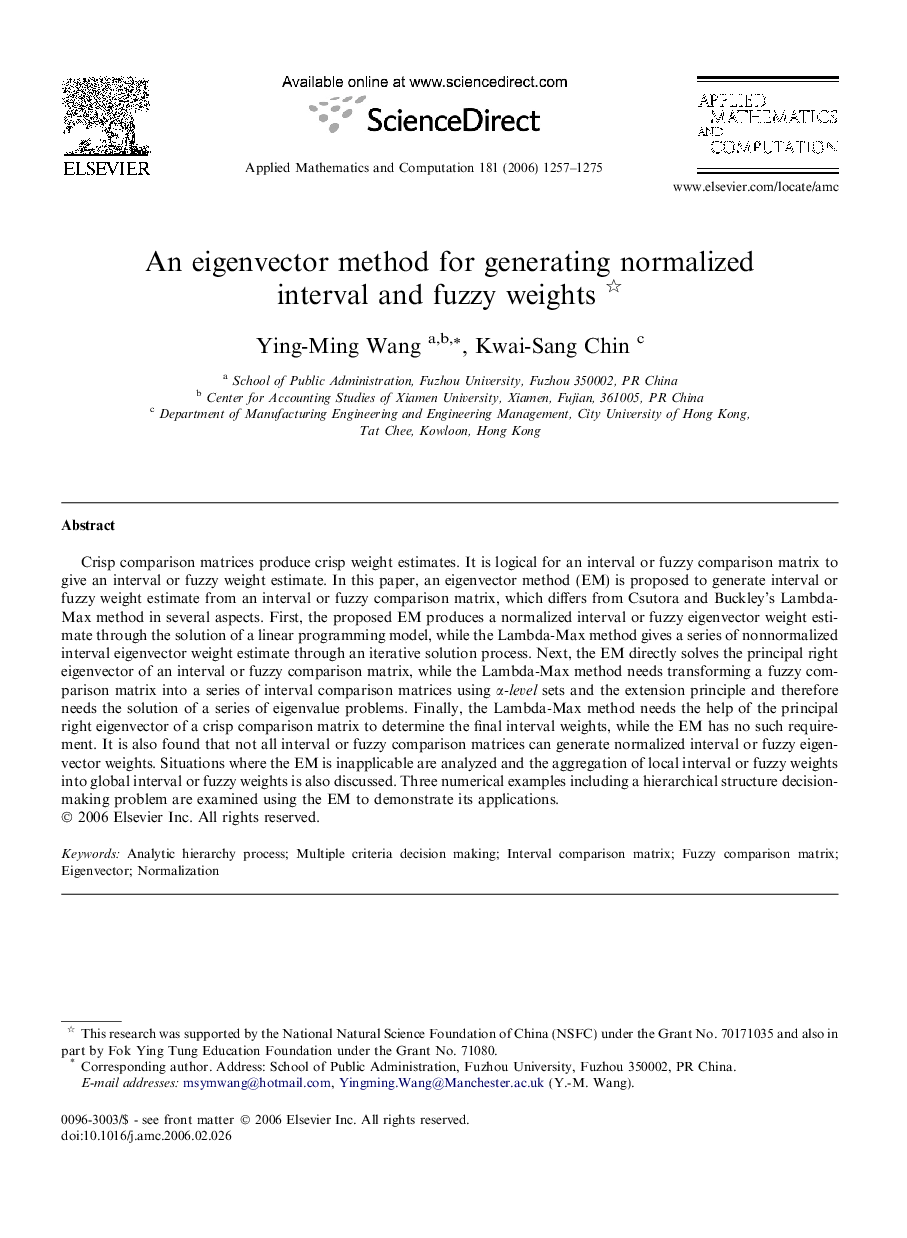| Article ID | Journal | Published Year | Pages | File Type |
|---|---|---|---|---|
| 4635745 | Applied Mathematics and Computation | 2006 | 19 Pages |
Crisp comparison matrices produce crisp weight estimates. It is logical for an interval or fuzzy comparison matrix to give an interval or fuzzy weight estimate. In this paper, an eigenvector method (EM) is proposed to generate interval or fuzzy weight estimate from an interval or fuzzy comparison matrix, which differs from Csutora and Buckley’s Lambda-Max method in several aspects. First, the proposed EM produces a normalized interval or fuzzy eigenvector weight estimate through the solution of a linear programming model, while the Lambda-Max method gives a series of nonnormalized interval eigenvector weight estimate through an iterative solution process. Next, the EM directly solves the principal right eigenvector of an interval or fuzzy comparison matrix, while the Lambda-Max method needs transforming a fuzzy comparison matrix into a series of interval comparison matrices using α-level sets and the extension principle and therefore needs the solution of a series of eigenvalue problems. Finally, the Lambda-Max method needs the help of the principal right eigenvector of a crisp comparison matrix to determine the final interval weights, while the EM has no such requirement. It is also found that not all interval or fuzzy comparison matrices can generate normalized interval or fuzzy eigenvector weights. Situations where the EM is inapplicable are analyzed and the aggregation of local interval or fuzzy weights into global interval or fuzzy weights is also discussed. Three numerical examples including a hierarchical structure decision-making problem are examined using the EM to demonstrate its applications.
